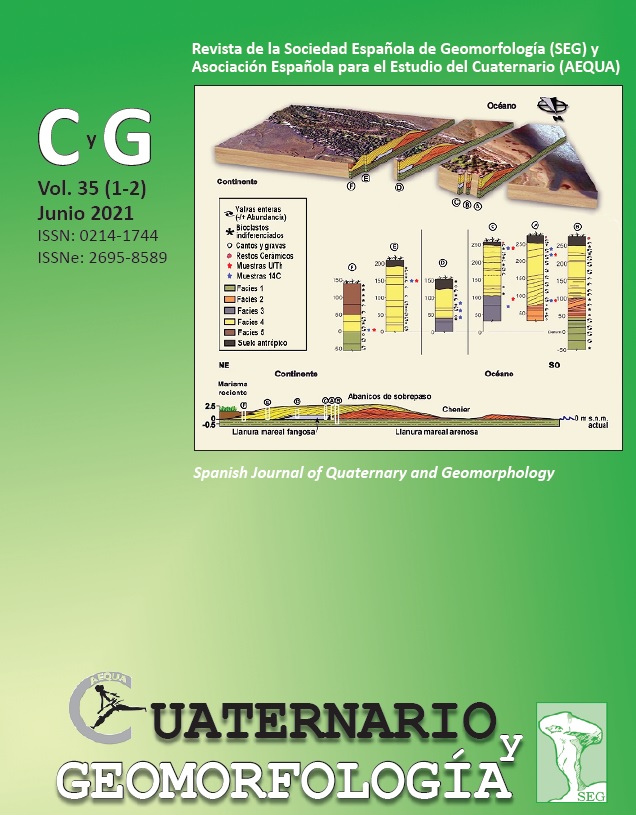Plata y bismuto como trazadores de la contaminación histórica en el estuario de los ríos Tinto y Odiel (S.O. de España)
DOI:
https://doi.org/10.17735/cyg.v35i1-2.89303Palabras clave:
Minería histórica; evolución sedimentaria; contaminación metálica; estuario ríos Tinto-Odiel; S.O. EspañaResumen
Este trabajo analiza la evolución vertical de facies y el contenido en Ag y Bi de un testigo continuo extraído en el estuario medio del río Tinto (S.O. España). El análisis sedimentológico y paleontológico permite definir cuatro facies sedimentarias, características de depósitos aluviales (F1: 6,5-6,2 ka BP), la presencia de facies estuarinas durante la inundación marina del sector coincidente con el máximo transgresivo holoceno y el periodo inmediatamente posterior (F2: 6,2-5,2 ka BP), el tránsito a marismas (F3: 5,2 ka BP-siglo XIX) y un relleno antrópico de finales del siglo XX. Los contenidos de Ag y Bi permiten precisar tres periodos principales de contaminación histórica: i) inicio de las actividades mineras y explotación de Ag durante la edad de Bronce (~4,5-3,2 ka BP); ii) periodo de máxima intensidad de la explotación minera romana (siglos I-II DC); y iii) minería intensiva reciente (desde 1870).


